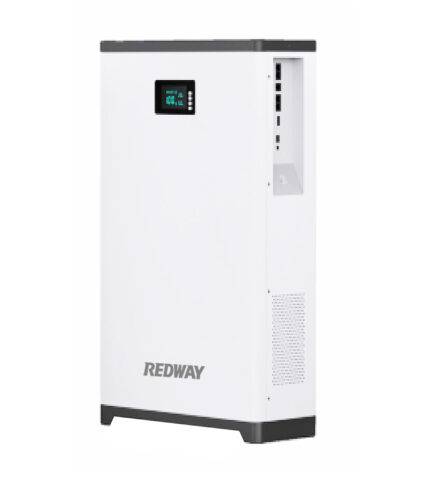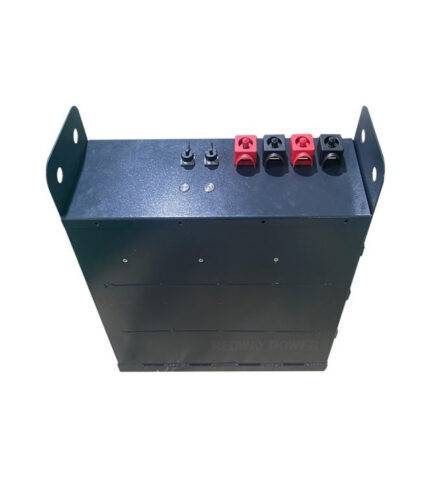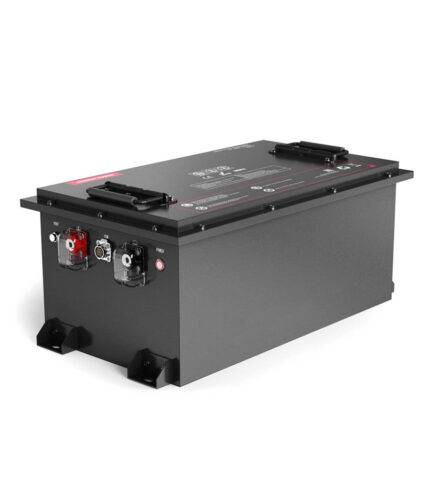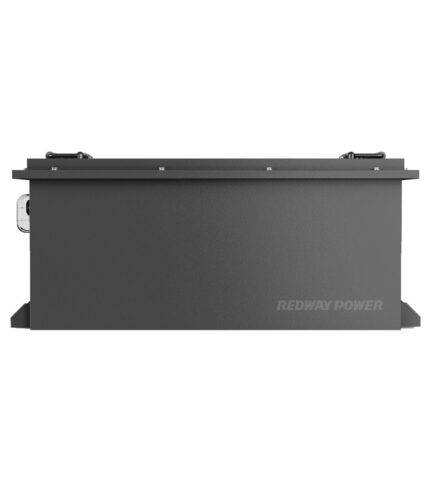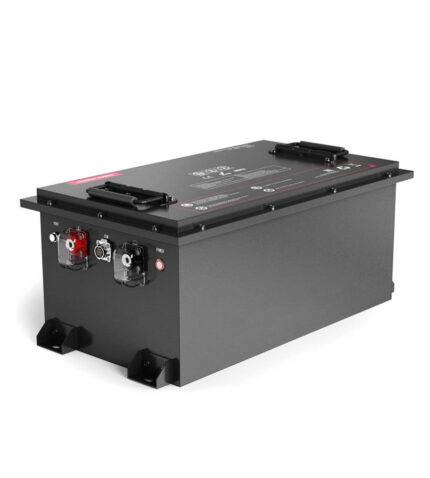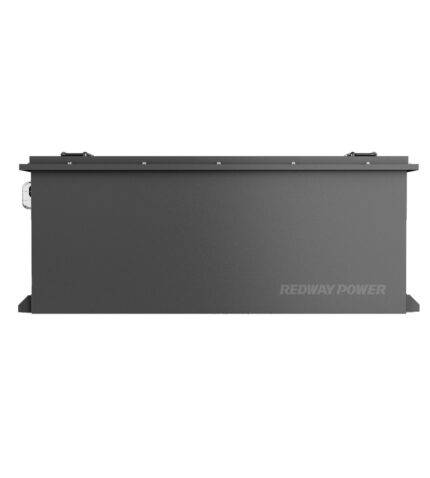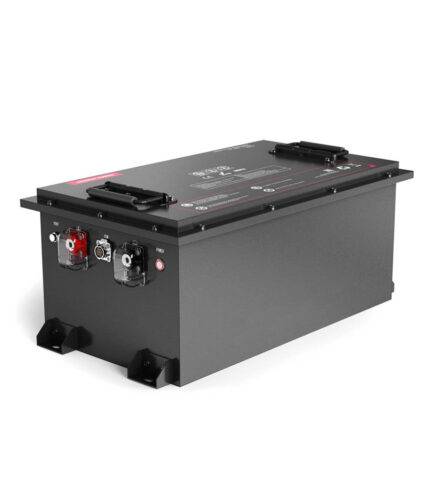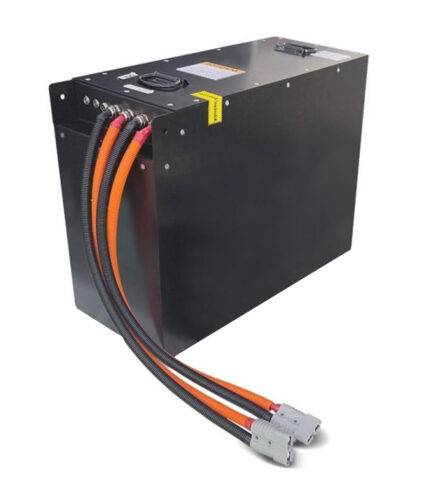- Forklift Lithium Battery
-
48V
- 48V 210Ah
- 48V 300Ah
- 48V 420Ah (949 x 349 x 569 mm)
- 48V 420Ah (950 x 421 x 450 mm)
- 48V 456Ah
- 48V 460Ah (830 x 630 x 590 mm)
- 48V 460Ah (950 x 421 x 450 mm)
- 48V 460Ah (800 x 630 x 600 mm)
- 48V 460Ah (820 x 660 x 470 mm)
- 48V 500Ah
- 48V 560Ah (810 x 630 x 600 mm)
- 48V 560Ah (950 x 592 x 450 mm)
- 48V 600Ah
- 48V 630Ah
-
48V
- Lithium Golf Cart Battery
- 12V Lithium Battery
12V 150Ah Lithium RV Battery
Bluetooth App | BCI Group 31
LiFePO4 Lithium
Discharge Temperature -20°C ~ 65°C
Fast Charger 14.6V 50A
Solar MPPT Charging - 24V Lithium Battery
- 36V Lithium Battery
- 48V Lithium Battery
-
48V LiFePO4 Battery
- 48V 50Ah
- 48V 50Ah (for Golf Carts)
- 48V 60Ah (8D)
- 48V 100Ah (8D)
- 48V 100Ah
- 48V 100Ah (Discharge 100A for Golf Carts)
- 48V 100Ah (Discharge 150A for Golf Carts)
- 48V 100Ah (Discharge 200A for Golf Carts)
- 48V 150Ah (for Golf Carts)
- 48V 160Ah (Discharge 100A for Golf Carts)
- 48V 160Ah (Discharge 160A for Golf Carts)
-
48V LiFePO4 Battery
- 60V Lithium Battery
-
60V LiFePO4 Battery
- 60V 20Ah
- 60V 30Ah
- 60V 50Ah
- 60V 50Ah (Small Size / Side Terminal)
- 60V 100Ah (for Electric Motocycle, Electric Scooter, LSV, AGV)
- 60V 100Ah (for Forklift, AGV, Electric Scooter, Sweeper)
- 60V 150Ah (E-Motocycle / E-Scooter / E-Tricycle / Tour LSV)
- 60V 200Ah (for Forklift, AGV, Electric Scooter, Sweeper)
-
60V LiFePO4 Battery
- 72V~96V Lithium Battery
- Rack-mounted Lithium Battery
- E-Bike Battery
- All-in-One Home-ESS
- Wall-mount Battery ESS
-
Home-ESS Lithium Battery PowerWall
- 24V 100Ah 2.4kWh PW24100-S PowerWall
- 48V 50Ah 2.4kWh PW4850-S PowerWall
- 48V 50Ah 2.56kWh PW5150-S PowerWall
- 48V 100Ah 5.12kWh PW51100-F PowerWall (IP65)
- 48V 100Ah 5.12kWh PW51100-S PowerWall
- 48V 100Ah 5.12kWh PW51100-H PowerWall
- 48V 200Ah 10kWh PW51200-H PowerWall
- 48V 300Ah 15kWh PW51300-H PowerWall
PowerWall 51.2V 100Ah LiFePO4 Lithium Battery
Highly popular in Asia and Eastern Europe.
CE Certification | Home-ESS -
Home-ESS Lithium Battery PowerWall
- Portable Power Stations
48V (51.2V) 450Ah 456Ah Forklift Lithium Battery
• Applications: Forklift / RGV / AGV / AMR / LGV
![]()
• Cell: LiFePO4
• MOQ: 1
• Delivery: 25 Days
• Customizable / OEM / ODM: Yes
• Factory: Redway, Dongguan, Guangdong, China
• Delivery Terms: FOB, EXW, CIF
• Payment: T/T, L/C, PayPal
• Sea / Air / Land Shipment: 10FT, 20FT, 40FT, 60FT
Description
This battery is the 48V (51.2V) 450Ah Lithium Forklift Battery from Redway Power, a leading manufacturer in China specializing in high-performance lithium-ion battery solutions. Engineered with advanced LiFePO4 technology, this battery provides exceptional energy efficiency and reliability for various industrial applications, making it an ideal choice for material handling operations.
Key Features:
- High Capacity: With a nominal capacity of 456Ah and a total energy output of 23.347 kWh, this battery supports extended operational hours without frequent recharging.
- Long Cycle Life: Designed to last over 6,000 cycles at 80% depth of discharge (DOD), ensuring longevity and reduced replacement costs.
- Robust Design: Rated at IP67, this battery is protected against dust and water ingress, making it suitable for harsh working environments.
- Smart BMS: Equipped with an advanced Battery Management System that monitors critical parameters, including overcurrent, overcharge, and temperature, ensuring safe and efficient operation.
- Customization Options: As an OEM provider, Redway Power offers tailored solutions to meet specific customer requirements, including dimensions and additional features.
Applications:
The 48V 450Ah Lithium Forklift Battery is perfect for a wide range of applications, including:
- Electric forklifts and pallet jacks
- Automated guided vehicles (AGVs)
- Material handling equipment in warehouses
- Industrial cleaning machines
- Renewable energy storage systems
This battery’s lightweight design allows for easy installation and integration into existing systems, while its high performance ensures that your equipment operates efficiently throughout the day.
With a charge voltage of 58.4V and a discharge voltage of 40V, this battery is optimized for various operational needs. It operates effectively across a temperature range from -20°C to 60°C, making it versatile enough for different industrial settings.
As a trusted factory in China, Redway Power is dedicated to delivering high-quality lithium-ion batteries that enhance productivity and sustainability in your operations. The 48V (51.2V) 450Ah Lithium Forklift Battery not only reduces downtime but also contributes to lower operational costs due to its efficiency and long lifespan.
Investing in this battery means choosing a reliable power solution that meets the demands of modern material handling while supporting your business’s growth and sustainability goals. Choose Redway Power for your lithium battery needs and experience unparalleled performance and service.
Specifications
Download 48V 450Ah 456Ah Forklift Lithium Battery Datasheet
Note: Our products are customizable, allowing customers to modify the main data according to their requirements.
| 48V450Ah (48V456Ah) | Specifications |
|---|---|
| Cell Type | LiFePO4 (CATL 3.2V 228Ah) |
| Nominal Voltage | 51.2V |
| Nominal Capacity | 456Ah |
| Nominal Energy | 23.347kWh |
| Charge Voltage | 58.4V |
| Discharge Voltage | 40V |
| Max. Continues Charge Current | 0.5C |
| Standard Continues Discharge Current | 0.5C |
| Max. Continues Discharge Current | 3C (30S) |
| Charger | CC / CV |
| Dimensions [L x W x H] | 815 x 740 x 450 mm |
| Weight | 750 kg (1653.5 lbs) |
| IP Rating | IP67 |
| Cycle Life | >6000 cycles (DOD 80%) |
| Self-Discharge | 2% (Per month) |
| Charge Temperature | 0°C ~ 60°C |
| Discharge Temperature | -20°C ~ 60°C |
| LCD Screen | Yes |
| Communication | RS485 / CAN-bus |
| Optional Upgrades | Bluetooth, APP, Wi-Fi, 4G, 5G, GPS, RS485, RS232, CAN-bus, Active Balance, Anti-theft, LED indicator light, Solar panel, MPPT, Inverters, TACP, SNMP, Fan, Heatsink, Thermal aerosol fire suppression device, Self-heating, etc. |
| BMS & Alarm | Smart BMS: Overcurrent, Overcharge, Overdischarge, Overload, Over Voltage, Low-voltage, Overtemperature, etc. |
| Battery Case | Metal |
| Design Life | 15 Years |
| Warranty | 3 Years |
| Silk-Screen / Label Printing | Yes |
| User Manual / Warranty Card | Yes |
| Customization / OEM / ODM | Yes |
| Shipment | Yes |
Applications and FAQs
RVs, solar lighting, etc., can benefit from 48V 450Ah (456Ah) LiFePO4 batteries, which offer significant improvements over traditional deep cycle batteries. A favored option for dependable power solutions in the market, sealed lead-acid batteries boast greater longevity and cost-effectiveness compared to standard sealed lead-acid batteries.
What is a 48V 450Ah (456Ah) lithium battery?
A 48V 450Ah (or 456Ah) lithium battery is a rechargeable energy storage device with a voltage of 48 volts and a capacity of 450 ampere-hours (Ah). It finds wide applications in marine, RV, commercial, and industrial settings due to its high energy density, long cycle life, and efficient power delivery. With a continuous current output of 10 amperes sustained over 216 hours, it offers reliable energy storage of 21.6 kilowatt-hours (kWh), catering to diverse applications.
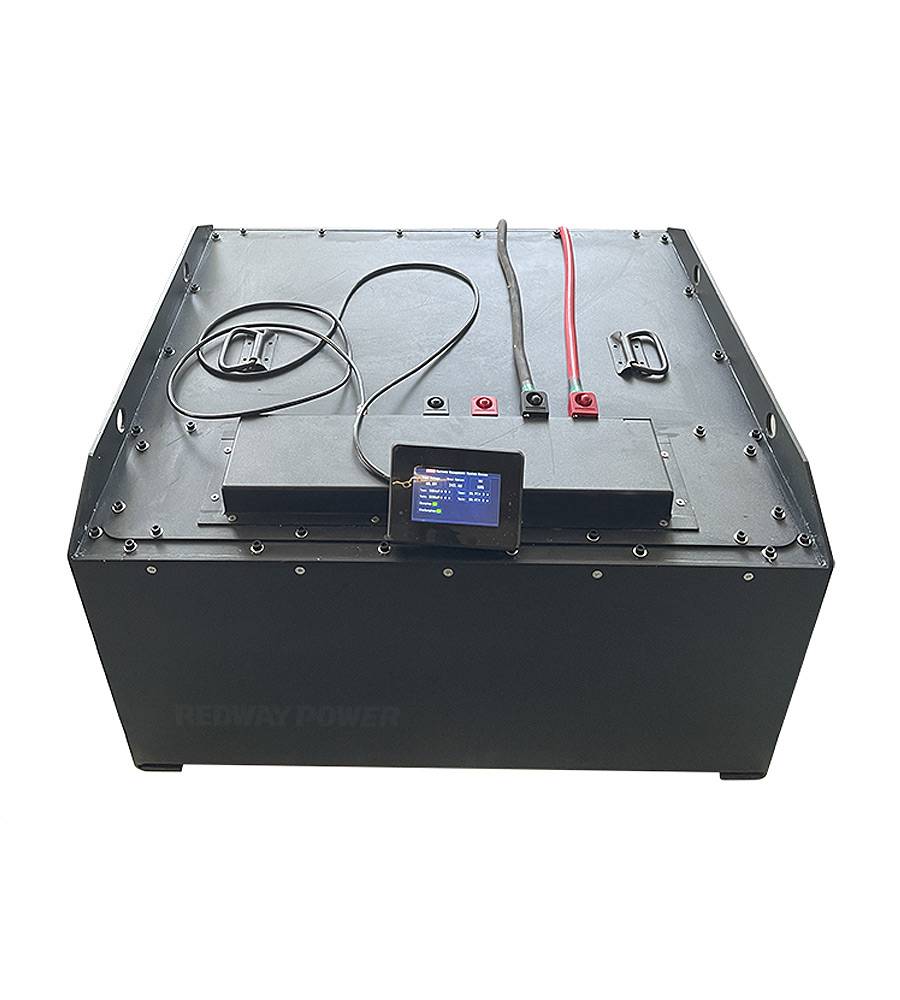
Where can you use a 48V 450Ah (456Ah) lithium battery?
A 48V 450Ah (or 456Ah) lithium battery can be utilized in a variety of applications across different industries due to its high energy density, long cycle life, and efficient power delivery. Here are some common uses:
- Marine Applications: This battery can power electric propulsion systems for boats and ships, offering silent and emissions-free operation, as well as extended cruising ranges.
- Recreational Vehicles (RVs): In RVs and campers, the battery can serve as a reliable power source for lighting, appliances, entertainment systems, and other electrical devices, providing off-grid capabilities for extended periods.
- Commercial Vehicles: It can be used in electric buses, trucks, and vans to provide propulsion and auxiliary power, offering cleaner and quieter transportation solutions with reduced operating costs.
- Industrial Equipment: This battery can be integrated into various industrial equipment, such as forklifts, electric pallet jacks, and material handling systems, to provide efficient and reliable power for extended operations.
- Renewable Energy Storage: In solar or wind power systems, the battery can store energy generated during peak production times for later use when energy demand is higher or when renewable sources are not available, ensuring grid stability and maximizing renewable energy utilization.
- Telecommunications: The battery can provide backup power for cell towers, communication networks, and remote telemetry systems to ensure continuous operation during power outages, improving reliability and resilience of communication infrastructure.
- Off-Grid Power Systems: In remote locations or areas with unreliable grid power, these batteries can serve as the primary power source for cabins, remote villages, telecommunication towers, and other off-grid applications, providing reliable electricity for various needs.
- Emergency Backup Power: It can be used in emergency backup power systems for hospitals, data centers, and critical infrastructure, ensuring uninterrupted operation during power outages and emergencies.
These are just a few examples, but the versatility of lithium batteries makes them suitable for a wide range of applications where reliable, high-capacity power storage is essential.
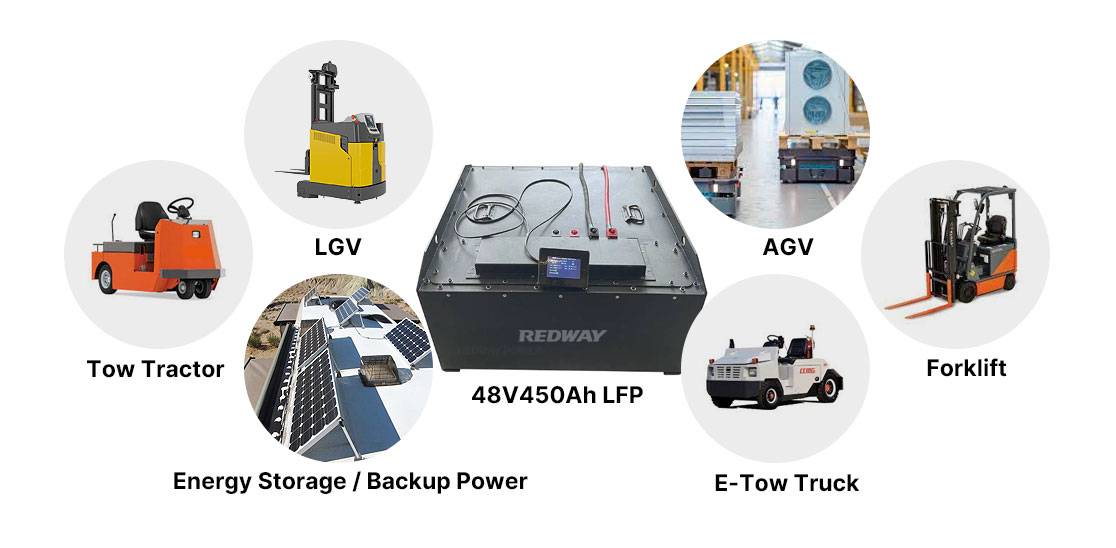
What are the advantages of a 48V 450Ah (456Ah) lithium-ion battery?
A 48V 450Ah (or 456Ah) lithium-ion battery offers several advantages over other types of energy storage solutions. Here are some key advantages:
- High Energy Density: Lithium-ion batteries have a higher energy density compared to lead-acid batteries, meaning they can store more energy in a smaller and lighter package. This makes them ideal for applications where space and weight are critical.
- Longer Cycle Life: Lithium-ion batteries typically have a longer cycle life compared to lead-acid batteries, meaning they can be charged and discharged more times before needing replacement. This results in lower long-term operating costs and reduced maintenance requirements.
- Fast Charging: Lithium-ion batteries can be charged at a much faster rate than lead-acid batteries, allowing for quicker turnaround times and increased productivity in applications where rapid charging is essential.
- High Efficiency: Lithium-ion batteries have a higher charge/discharge efficiency compared to lead-acid batteries, meaning they can convert more of the stored energy into usable power with less wasted energy loss. This results in improved overall system efficiency and reduced energy costs.
- Lightweight and Compact Design: Lithium-ion batteries are lighter and more compact than lead-acid batteries, making them easier to transport, install, and integrate into various applications.
- No Maintenance: Lithium-ion batteries require minimal maintenance compared to lead-acid batteries, which may need regular watering, equalization charging, and cleaning of terminals. This reduces the total cost of ownership and eliminates the need for specialized maintenance personnel.
- Deep Discharge Capability: Lithium-ion batteries can be safely discharged to a much lower state of charge compared to lead-acid batteries without causing damage or reducing the battery's lifespan. This allows for more usable capacity and increased flexibility in energy storage applications.
- Environmental Friendliness: Lithium-ion batteries are more environmentally friendly than lead-acid batteries since they do not contain toxic heavy metals such as lead and cadmium. Additionally, they have a lower self-discharge rate, reducing the overall environmental impact over their lifespan.
Overall, the advantages of a 48V 450Ah (456Ah) lithium-ion battery include higher energy density, longer cycle life, faster charging, improved efficiency, lightweight and compact design, minimal maintenance, deep discharge capability, and environmental friendliness, making them a preferred choice for many modern energy storage applications.
What are the disadvantages of a 48V 450Ah (456Ah) lithium battery?
Here are the disadvantages of a 48V 450Ah 456Ah lithium-ion battery:
- Higher Initial Cost:Lithium-ion batteries typically have a higher upfront cost compared to traditional lead-acid batteries, which may deter some users.
- Safety Concerns:There are safety concerns associated with lithium-ion batteries, including the risk of thermal runaway and fire if mishandled or damaged.
- Complex Recycling:Lithium-ion batteries require specialized recycling processes, which can be more complex and costly compared to lead-acid batteries.
- Limited Temperature Range:Lithium-ion batteries may have limited performance at extreme temperatures, affecting their efficiency and lifespan.
- Potential Degradation:Like all batteries, lithium-ion batteries can degrade over time, particularly if subjected to frequent deep discharges or high temperatures.
While these disadvantages exist, the benefits of lithium-ion batteries often outweigh them, especially for applications where high performance and energy efficiency are crucial.
How long will a 48V 450Ah (456Ah) battery last if fully charged?
The longevity of a fully charged 48V 450Ah (or 456Ah) battery depends on various factors, including the load it powers, discharge rate, and environmental conditions. To estimate its operating time, divide the battery's capacity by the current draw of the load. For example, if the load draws 10 amperes, the battery is expected to last approximately 45 (or 45.6) hours (450Ah ÷ 10A = 45 hours) under optimal conditions. However, factors like temperature, battery age, and depth of discharge can influence the actual runtime.
48V 450Ah (456Ah) lithium battery vs lead-acid battery, which is better?
Let's compare the 48V 450Ah (or 456Ah) lithium-ion battery and lead-acid battery point by point:
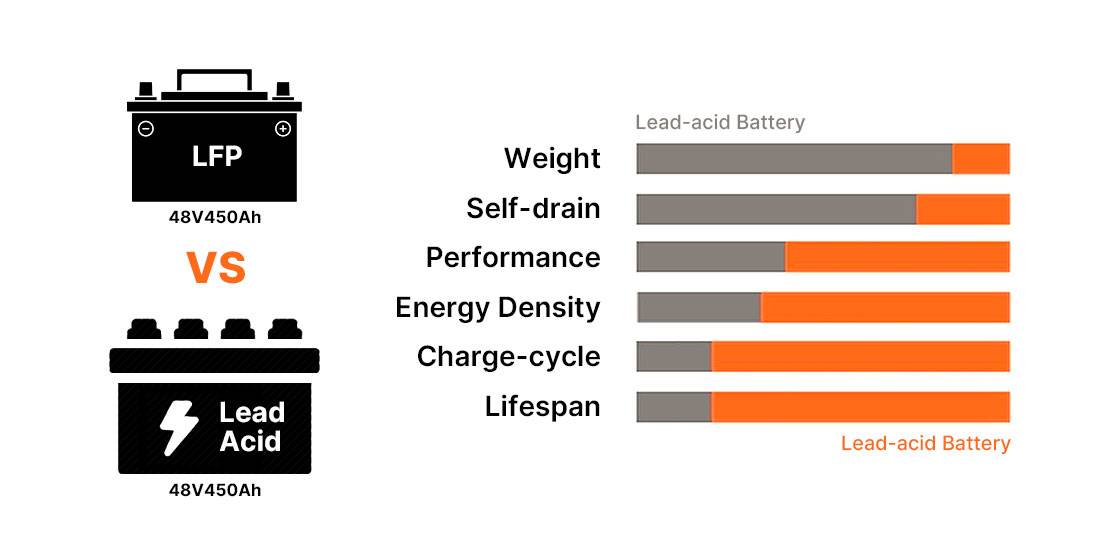
- Energy Density:
- Lithium-ion Battery: Higher energy density, providing more power in a smaller and lighter package.
- Lead-Acid Battery: Lower energy density, requiring more space and weight for equivalent power storage.
- Cycle Life:
- Lithium-ion Battery: Longer cycle life, lasting more charge-discharge cycles before needing replacement.
- Lead-Acid Battery: Shorter cycle life compared to lithium-ion batteries, requiring more frequent replacements over time.
- Charging Speed:
- Lithium-ion Battery: Faster charging capability, reducing downtime and increasing productivity.
- Lead-Acid Battery: Slower charging compared to lithium-ion batteries, potentially leading to longer charging times.
- Maintenance:
- Lithium-ion Battery: Requires minimal maintenance, eliminating the need for regular watering and cleaning.
- Lead-Acid Battery: Requires periodic maintenance such as watering, equalization charging, and terminal cleaning, increasing operational complexity.
- Deep Discharge Capability:
- Lithium-ion Battery: Can safely discharge to lower levels without damage, providing more usable capacity.
- Lead-Acid Battery: Limited deep discharge capability, requiring shallower discharges to prolong battery life.
- Environmental Impact:
- Lithium-ion Battery: Generally cleaner and more environmentally friendly, containing fewer toxic materials and having lower emissions during operation.
- Lead-Acid Battery: Contains toxic materials such as lead and sulfuric acid, posing environmental risks during production, use, and disposal.
- Initial Cost:
- Lithium-ion Battery: Higher upfront cost compared to lead-acid batteries.
- Lead-Acid Battery: Lower initial cost, making it more budget-friendly for some applications.
- Safety:
- Lithium-ion Battery: Generally safe when handled properly but can pose safety risks if mishandled or abused.
- Lead-Acid Battery: Generally safe but can emit hydrogen gas during charging, posing explosion hazards in confined spaces.
Overall, the choice between lithium-ion and lead-acid batteries depends on specific application requirements, budget constraints, and environmental considerations. While lithium-ion batteries offer advantages in energy density, cycle life, charging speed, and maintenance, lead-acid batteries may be preferred for their lower initial cost and established technology in certain applications.
What quality standards does Redway Power apply to the 48V 450Ah (456Ah) lithium battery?
Redway Power applies stringent quality standards to its 48V 450Ah (456Ah) lithium battery to ensure reliability and safety:
- Adherence to International Standards: Compliance with ISO 9001 for quality management systems and ISO 14001 for environmental management during manufacturing.
- Certifications for Safety and Compliance: Obtaining certifications such as UL (Underwriters Laboratories) or CE (Conformité Européenne) to demonstrate adherence to safety and product standards.
- Rigorous Testing Procedures: Subjecting batteries to thorough testing, including the IEC 62133 test, to verify safety and prevent short-circuiting.
- Stringent Manufacturing Processes: Implementing strict manufacturing processes to maintain consistency and quality throughout battery production.
- Comprehensive Quality Control Measures: Employing extensive quality control measures to monitor and ensure battery quality and performance at every stage of production.
These measures guarantee that the 48V 450Ah (456Ah) lithium battery meets industry and regulatory requirements, providing users with reliable performance and safety assurance.
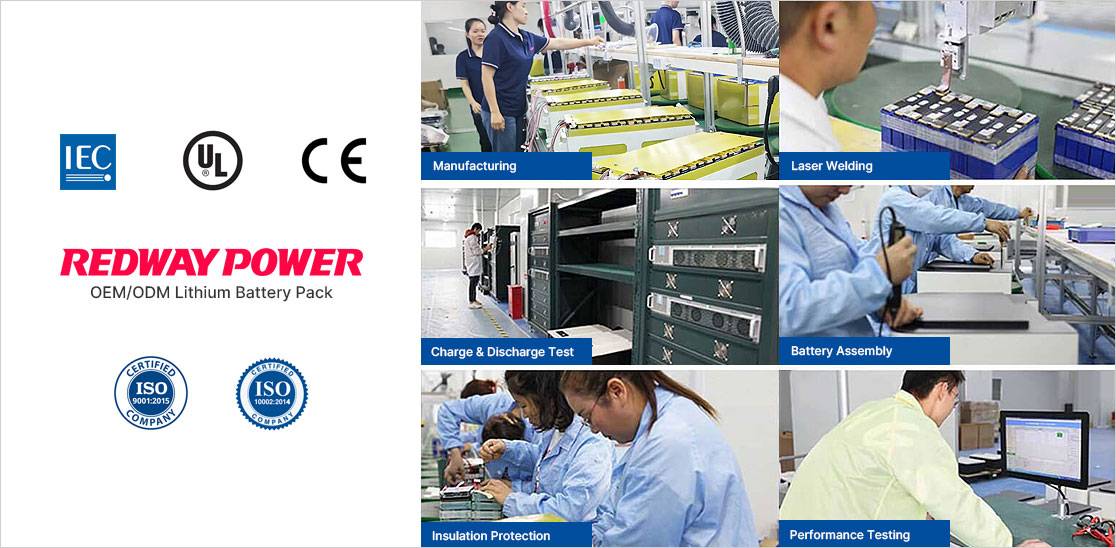
Is it safer to use a 48V 450Ah 456Ah lithium-ion battery?
Yes. The safety of a 48V 450Ah (or 456Ah) lithium-ion battery hinges on factors like design, manufacturing quality, adherence to safety standards, and proper usage. Reputable manufacturers like Redway Power implement stringent quality standards and certifications, integrating protection circuits and thermal management systems to mitigate risks of overcharging, overheating, and short-circuiting. Users must follow recommended handling procedures and monitor battery health regularly to ensure safe operation. When manufactured and used correctly, these batteries offer a safe and reliable power source for various applications, providing efficiency and performance without compromising safety.
What are the features of a 48V 450Ah 456Ah lithium-ion battery?
The 48V 450Ah 456Ah lithium-ion battery is a popular choice for numerous applications due to its many advantageous qualities. It boasts a high energy density, providing ample storage capacity in a compact and lightweight design, unlike traditional lead-acid batteries. With a long cycle life, it can endure multiple charge and discharge cycles without significant capacity loss, ensuring reliable performance over extended periods. Not only does it charge efficiently, but it also has a low self-discharge rate and requires minimal maintenance, making it both cost-effective and hassle-free as a power solution.
What are the specifications of a 48V 450Ah 456Ah lithium-ion battery?
When evaluating a 48V 450Ah 456Ah lithium-ion battery, key factors to consider include its voltage rating and capacity of 500 Ah. Other important considerations include size, weight, maximum discharge rate, operating temperature range, expected cycle life, and built-in protection circuits. Keep in mind that these specifications may vary depending on the manufacturer and intended use. Therefore, it is essential to thoroughly examine the datasheet or product specifications to ensure it meets the specific requirements and performs optimally.
How to maintain a 48V 450Ah 456Ah lithium-ion battery?
The following steps will help you maintain your 48V 450Ah 456Ah lithium-ion battery effectively to maximize its lifespan and ensure optimal performance:
- Follow Manufacturer Guidelines:Adhere to all guidelines provided by the manufacturer before using the battery, and handle it with care to prevent damage.
- Regular Monitoring:Avoid leaving the lithium battery unattended for extended periods. Regularly check the battery status and charge rate, as it may gradually self-discharge when not in use.
- Charge Before Storage:Although lithium batteries have a low self-discharge rate, it's essential to charge or discharge them before extended storage periods. Avoid storing them at high temperatures, as this can reduce their lifespan.
- Handle with Precaution:Take precautions to protect the battery from excessive vibrations, as they can affect its performance. Additionally, manage temperature and prevent overcharging (high-voltage) to maintain optimal battery health.
You can ensure that your 48V 450Ah 456Ah lithium-ion battery remains in great condition by following these maintenance practices.















